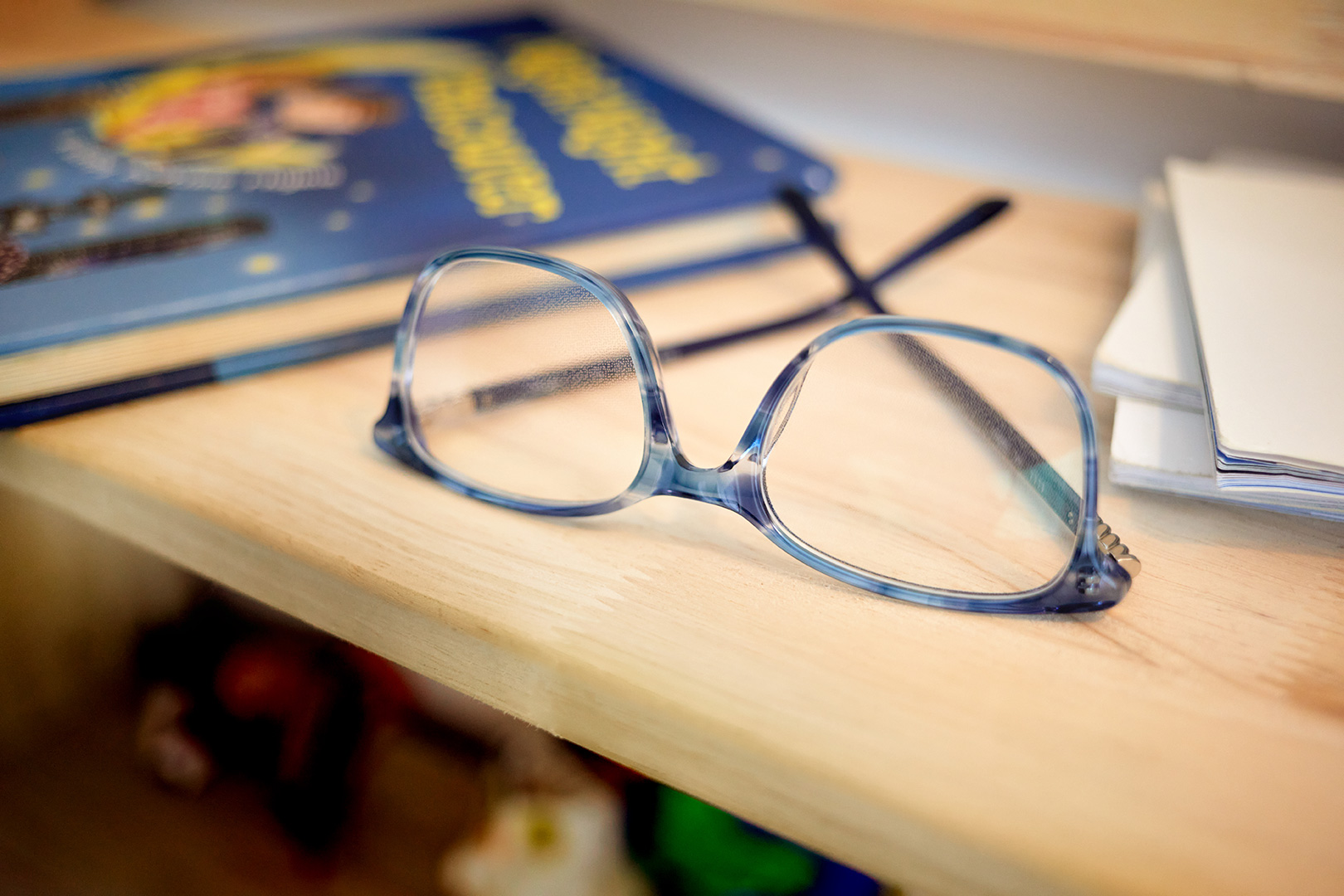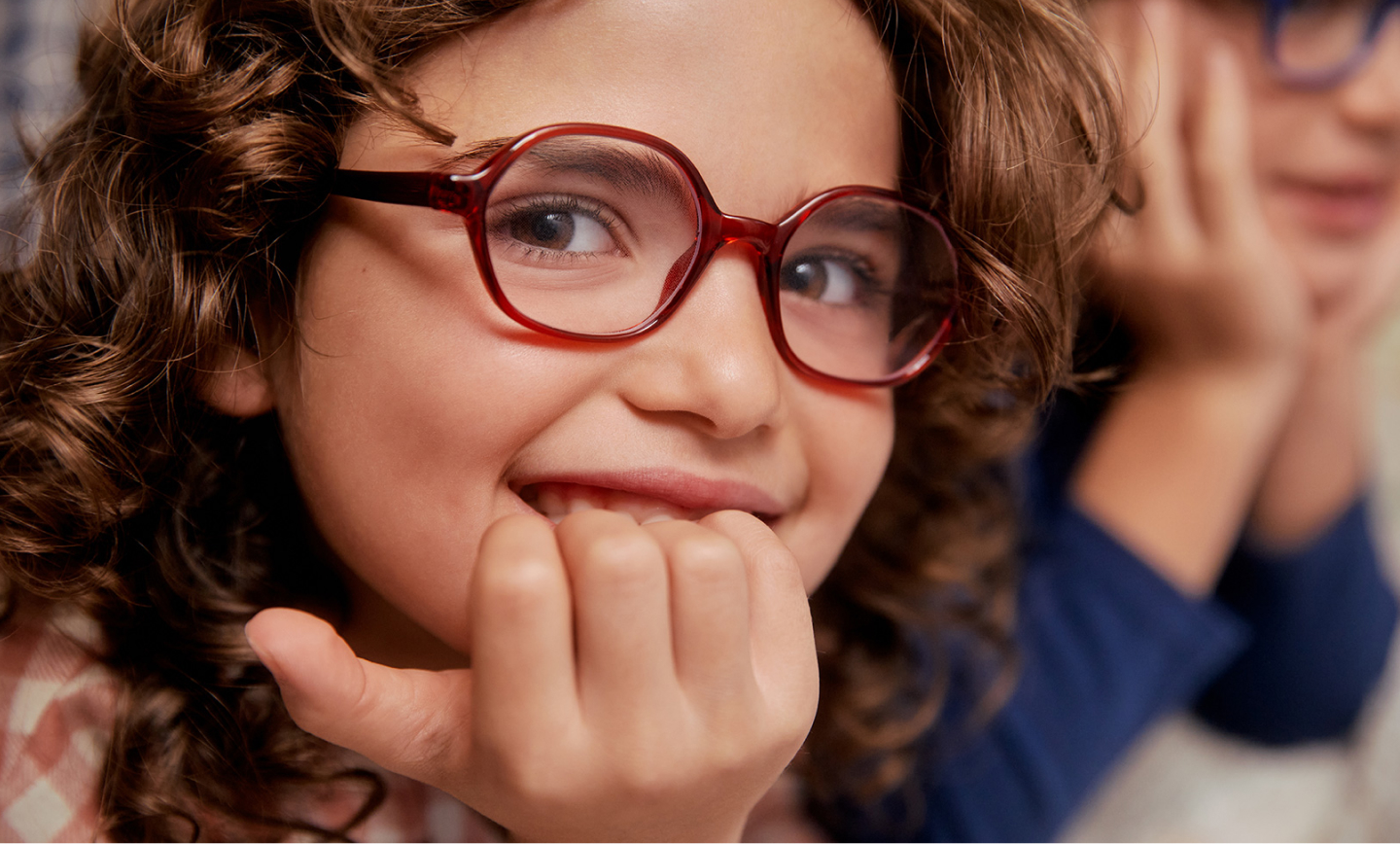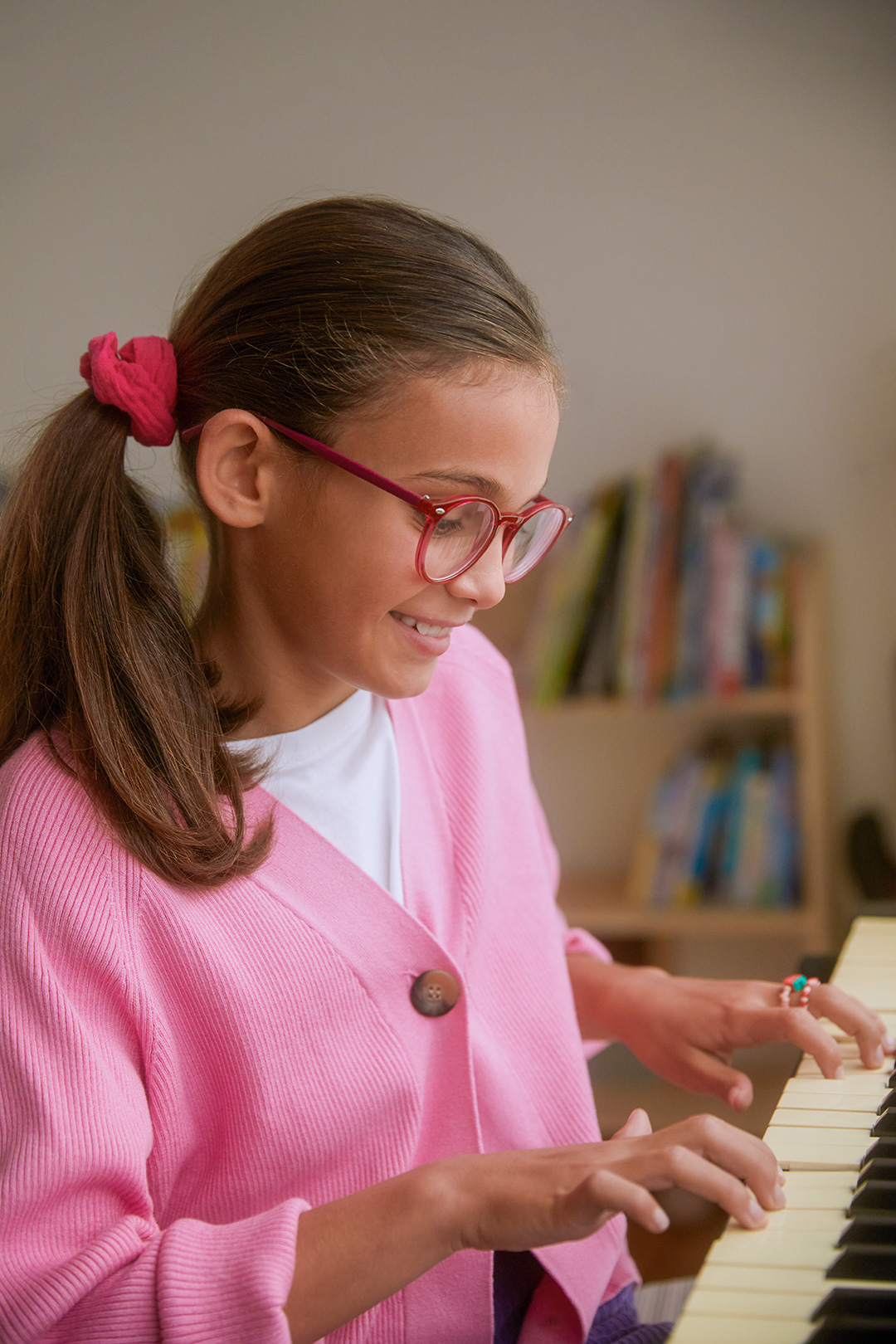
Children’s eye disease : the signs to look out for

What is myopia?
Myopia, or near–sightedness, is a condition that occurs when the light coming into an eye doesn’t focus on the retina, but in front of it, making distant objects appear blurry while close objects can be seen clearly. The condition generally starts between the ages of 6 and 13 years but it can also develop in very young children. For most children it is a minor inconvenience that can be corrected with glasses. However, the worse the myopia becomes the greater the risk of serious eye conditions such as retinal detachment, glaucoma and the early development of cataracts, making it one of the leading causes of visual impairment and
blindness.
The earlier the condition can be detected, the better for your child as there are now spectacle lenses available in certain markets that can slow the progression of myopia. Diffusion Optics Technology™ (DOT) lenses use a new and unique technology from SightGlass Vision designed to reduce axial elongation. A study has demonstrated effectiveness in children as young as 6 years old¹. The earlier your child uses DOT lenses, the more effective they are in potentially slowing the progression of your child’s myopia!
What are the symptoms of myopia?
If your child is nearsighted, he may have difficulty reading words or seeing from a distance such as the whiteboard at school. You may notice them sitting close to the TV or computer, or holding their mobile phone or tablet close to their face. Other nearsighted symptoms to watch out for include your child complaining of headaches, tired eyes, squinting, or regularly rubbing their eyes.
What is Hyperopia/Hypermetropia?
Hyperopia or hypermetropia, more commonly known as far–sightedness, affects the ability to see nearby objects. The condition occurs when the eye focuses light behind the retina because the eyeball is too short.
What are the symptoms of Hyperopia?
Far–sightedness could affect your child in a number of different ways. You may notice them squinting to see clearly, or having tired, strained eyes after activities that involve focusing on near objects such as reading, writing or working on their computer. Your child may also complain of headaches. Children who are far–sighted often do not have obvious issues with their vision at first. But if left untreated it can lead to problems such as a lazy eye.
What is astigmatism?
Astigmatism means the eye is more oval shaped than round which causes light to be focused at more than one place in the eye. It’s likely that if a child has astigmatism they will be far or near–sighted too.
What are the symptoms of astigmatism?
If your child has astigmatism then objects can appear blurry at all distances. The condition might make it difficult for your child to focus on objects properly, and even to read, and you may notice them complaining of fuzzy vision or holding objects close to their face to look at them. They might also complain of headaches and eye strain.
What is strabismus?
Strabismus, more commonly known as a squint or crossed eyes, is when the two eyes do not line up with each other. One eye may look straight ahead while the other turns in, out, up or down.
How can I tell if my child has strabismus?
With newborns and very young babies, some misalignment is normal as their eyes are still learning to focus on individual objects. However, if you notice that your child still has a squint after the age of three months, it is a good idea to have them checked over by an eye care professional.
Strabismus won’t go away on its own but there are a range of treatment options that you can discuss with your child’s eye care professional
What is amblyopia?
Amblyopia, known commonly as a lazy eye, is a childhood sight disorder which is caused by the brain failing to fully process input from one eye and favoring the other eye as a result. As it tends to only affect one eye, it means the child will come to rely on the eye with which they can see more clearly.
What are the symptoms of amblyopia?
A lazy eye can often be difficult to detect as in general it doesn’t cause symptoms. Very young children may well not notice that they have a problem with their vision, and even if they do, may struggle to explain the symptoms. Older children may complain about vision problems with one eye. You can also notice them struggling with activities such as reading, writing or drawing.
What is chalazion?
A chalazion is a small swelling of the eyelid which can often be confused with a stye (an inflamed oil gland on the edge of the eye which looks like a red lump) in its early stages. It occurs when the glands in either the upper or lower eyelid become blocked.
What are the symptoms of chalazion?
If your child has a chalazion you will notice a swollen lump on their eyelid and they may complain of discomfort. Depending on the position and size of the chalazion, it might interfere with your child’s vision, particularly if it’s near the center of the eyelid’s edge.
Usually you can treat this with warm compresses, but if the lump is still there after 3 – 4 months you should take your child to an eye care professional to discuss having it removed.
What is conjunctivitis?
Conjunctivitis is one of the most common eye conditions. It affects all ages but children tend to contract it more frequently as it’s contagious and, as all parents will know, children tend to spread germs and bacteria amongst themselves more often than adults do.
What are the symptoms of conjunctivitis?
Conjunctivitis usually affects both eyes and makes them inflamed, red and irritated. They may also produce discharge which sticks to the lashes. Conjunctivitis can go away on its own, but as it’s highly contagious it would be a good idea to visit your eye care professional to confirm if your child does indeed have the condition so you can keep them away from their friends for a little while. Your eye care professional would also be able to rule out anything more serious and prescribe the appropriate eye drops.
What is double vision?
As the name suggests, double vision is when a person sees two separate images of the same object in front of them with both eyes.
What causes it?
Double vision is usually caused by strabismus and causes two identical images to appear next to, above or below, each other. If you notice that your child is having trouble with their depth perception, or if they’re frequently missing objects that they try to grab hold of, then it would be a good idea to get their eyes checked.
What is ptosis?
Ptosis is a drooping of the upper eyelid which can restrict or block vision in that eye.
What causes it?
The condition is generally caused by weakness in the muscle which holds the eyelid up. Children can either be born with the condition or develop it later in childhood. If the eyelid droops enough to impede vision, it can cause amblyopia to develop. This is because the brain has to rely less on that eye and start using the stronger eye instead. If the eyelid droops very low then your child may need surgery to raise it in order to preserve vision in that eye.
Conclusion
To sum it all up, if you’re in any doubt at all about your child’s eye health, then see your eye care professional for an eye exam, as soon as possible!
- Joe Rappon, Carol Chung, Graeme Young, Christopher Hunt, Jay Neitz, Maureen Neitz, Thomas
Chalberg: Control of myopia using diffusion optics spectacle lenses: 12–month results of a randomised
controlled, efficacy and safety study (CYPRESS)
Other articles
All articlesPlease note that our products are not available for sale or distribution in every country in the world.
Our products are not available for sale in the U.S.

